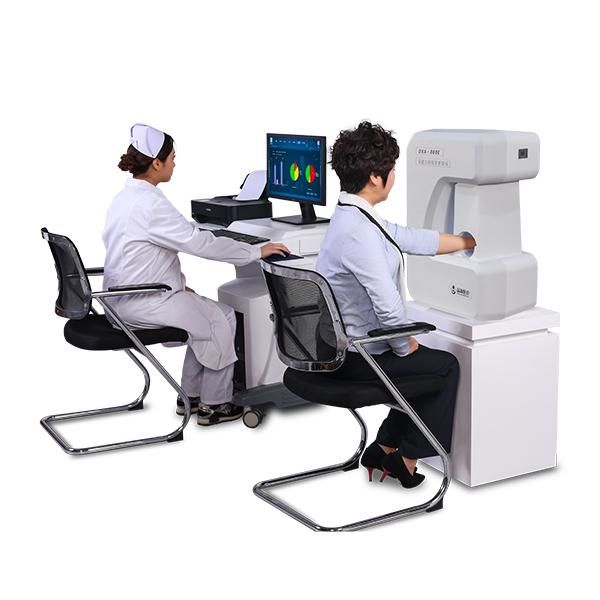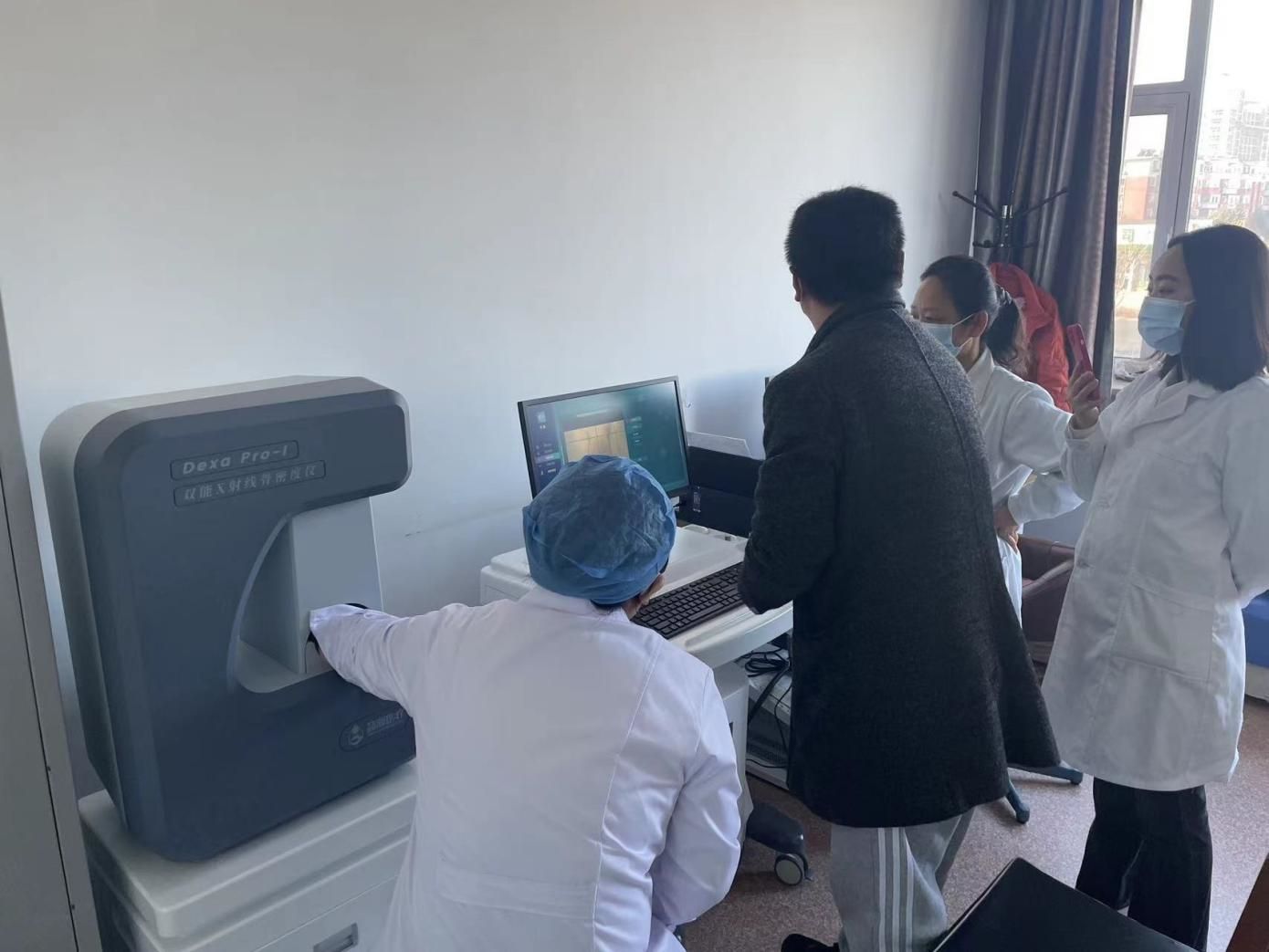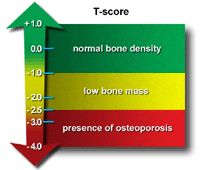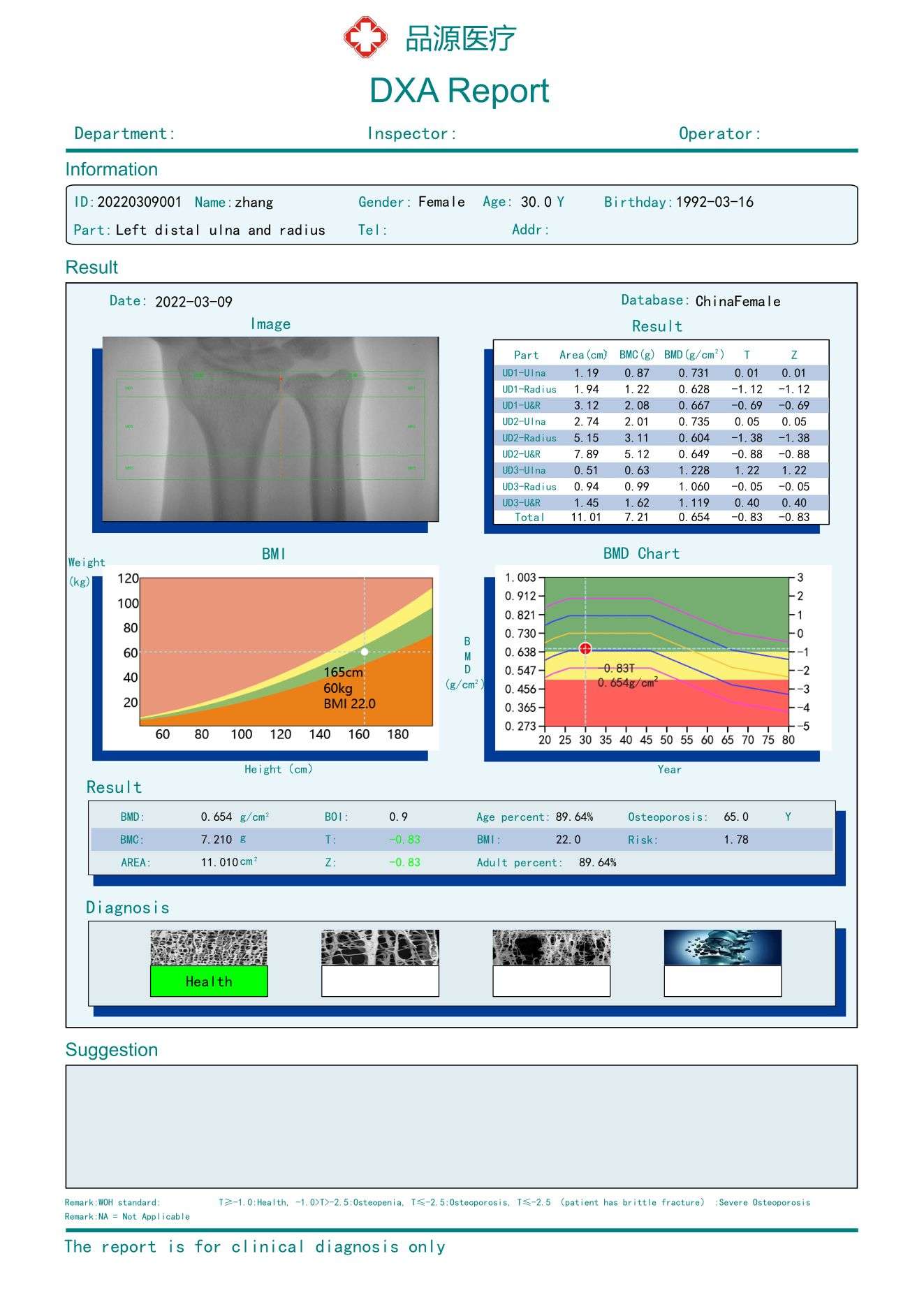A bone density test is used to measure bone mineral content and density. It may be done using X-rays, dual-energy X-ray absorptiometry (DEXA or DXA), or a special CT scan that uses computer software to determine bone density of the hip or spine. For various reasons, the DEXA scan is considered the “gold standard” or most accurate test.
This measurement tells the healthcare provider whether there is decreased bone mass. This is a condition in which bones are more brittle and prone to break or fracture easily.
A bone density test is used mainly to diagnose osteopenia and osteoporosis . It is also used to determine your future fracture risk. The testing procedure typically measures the bone density of the bones of the spine, lower arm, and hip. Portable testing may use the radius (1 of the 2 bones of the lower arm), wrist, fingers, or heel for testing, but is not as precise as the nonportable methods because only one bone site is tested.
Standard X-rays may show weakened bones. But at the point when bone weakness can be seen on standard X-rays, it may be too far advanced to treat. Bone densitometry testing can find decreasing bone density and strength at a much earlier stage when treatment can be beneficial.
Bone density test results
A bone density test determines the bone mineral density (BMD). Your BMD is compared to 2 norms—healthy young adults (your T-score) and age-matched adults (your Z-score).
First, your BMD result is compared with the BMD results from healthy 25- to 35-year-old adults of your same sex and ethnicity. The standard deviation (SD) is the difference between your BMD and that of the healthy young adults. This result is your T-score. Positive T-scores indicate the bone is stronger than normal; negative T-scores indicate the bone is weaker than normal.
According to the World Health Organization, osteoporosis is defined based on the following bone density levels:
A T-score within 1 SD (+1 or -1) of the young adult mean indicates normal bone density.
A T-score of 1 to 2.5 SD below the young adult mean (-1 to -2.5 SD) indicates low bone mass.
A T-score of 2.5 SD or more below the young adult mean (more than -2.5 SD) indicates the presence of osteoporosis.
In general, the risk for bone fracture doubles with every SD below normal. Thus, a person with a BMD of 1 SD below normal (T-score of -1) has twice the risk for bone fracture as a person with a normal BMD. When this information is known, people with a high risk for bone fracture can be treated with the goal of preventing future fractures. Severe (established) osteoporosis is defined as having a bone density that is more than 2.5 SD below the young adult mean with one or more past fractures due to osteoporosis.
Secondly, your BMD is compared to an age-matched norm. This is called your Z-score. Z-scores are calculated in the same way, but the comparisons are made to someone of your age, sex, race, height, and weight.
In addition to bone densitometry testing, your healthcare provider may recommend other types of tests, such as blood tests, which may be used to find the presence of kidney disease, evaluate the function of the parathyroid gland, evaluate the effects of cortisone therapy, and/or assess the levels of minerals in the body related to bone strength, such as calcium.
Why might I need a bone density test?
A bone density test is mainly done to look for osteoporosis (thin, weak bones) and osteopenia (decreased bone mass) so that these problems can be treated as soon as possible. Early treatment helps to prevent bone fractures. The complications of broken bones related to osteoporosis are often severe, particularly in the elderly. The earlier osteoporosis can be diagnosed, the sooner treatment can be started to improve the condition and/or keep it from getting worse.
A bone density testing may be used to:
Confirm a diagnosis of osteoporosis if you have already had a bone fracture
Predict your chances of fracturing a bone in the future
Determine your rate of bone loss
See if treatment is working
There are many risk factors for osteoporosis and indications for densitometry testing. Some common risk factors for osteoporosis include:
Post-menopausal women not taking estrogen
Advancing age, women over 65 and men over 70
Smoking
Family history of hip fracture
Using steroids long-term or certain other medicines
Certain diseases, including rheumatoid arthritis, type 1 diabetes mellitus, liver disease, kidney disease, hyperthyroidism, or hyperparathyroidism
Excessive alcohol consumption
Low BMI (body mass index)
Using Pinyuan Bone densitometer to keep your bone health , we are the professtional manufacturer , more information please search www.pinyuanchina.com
Post time: Mar-24-2023





